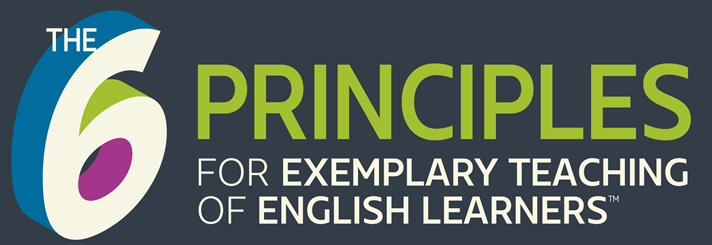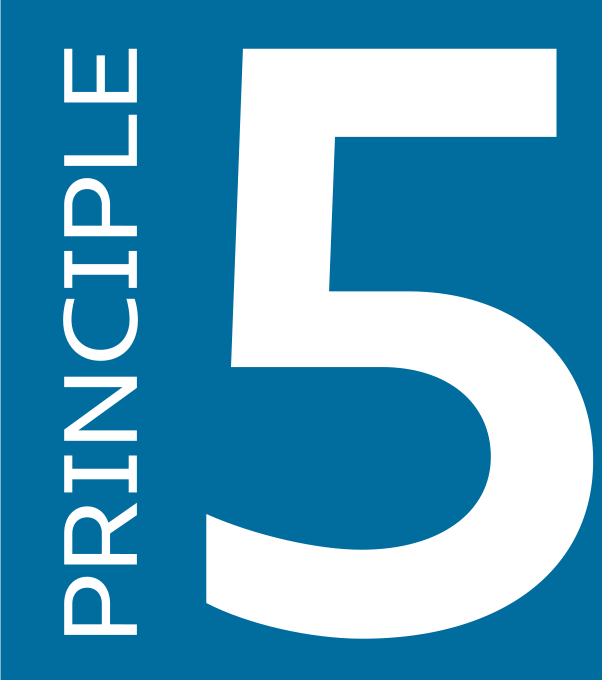Some Practices for Principle 5
Teachers monitor student errors.
By interacting frequently with our students, we can acquire a great deal of information about their progress. Some teachers record the results of their interactions (e.g., correct and incorrect uses of English) in an anecdotal way, use a check list, or change student grouping patterns and/or partners, depending on their newly developing proficiency.
Classroom Example: Teachers reteach when errors indicate that students misunderstood or learned the material incorrectly.
When errors are not part of the language development process, teachers plan for reteaching or additional practice. They may present a mini-lesson on the topic for the whole class or work with a small group of learners who need the support.
Teachers provide ongoing effective feedback strategically.
To be constructive, a teacher’s feedback in response to a learner’s error is delivered strategically and in a timely manner but it must also suit the age and language development level of the student. The feedback can be positive or corrective. It is important that the feedback be specific and related to what learners are doing well in addition to what they can improve.
Classroom Example: Teachers deliver feedback in a timely manner.
Students may be more able to use feedback if it is not delayed. Timeliness is more important with oral feedback than with written feedback. Private feedback is appreciated by all students, no matter their age.
Classroom Activities That Support Principle 5
Try these activities from books in the popular New Ways Series from TESOL Press!
- Building Rubrics Democratically
- Tickets Out
- Using Screencasts To Give Feedback
- Encouraging Peer Feedback With Sticky Notes
- Using Color Coded E Rubrics
Try these activities from the TESOL Resource Center (TRC).
- Incorporating Content and Language in Assessment
- Using Formative Assessment in the Classroom to Monitor Student Learning
The activity below from Assessing English Learners in U.S. Schools (Farnsworth & Malone, 2014) offers a formative assessment that elementary teachers can use to determine student ability to retell texts.
Establish a Culture of Shared Responsibility
Special Education Directors and Gifted and Talented Program Directors
Ensure that all personnel involved in administering and interpreting assessments conducted to determine students’ eligibility for special education or gifted and talented programs are fully bilingual and bicultural. As needed, hire special education assessors who are bilingual, or, at a minimum, are trained to assess linguistically and culturally diverse students.
Reading Specialists and Instructional Coaches
Help incorporate test-like tasks in ongoing classroom assessments to familiarize students with test formats and tasks that they will encounter when taking district and state assessments.
District Curriculum Directors
Provide clear instructions about when assessments must be conducted in English and when they can be administered in students’ home languages. If unit assessments are to be conducted in English, specify the testing accommodations that should be used in the classroom and provided to students to make the assessments as fair and valid as possible.

